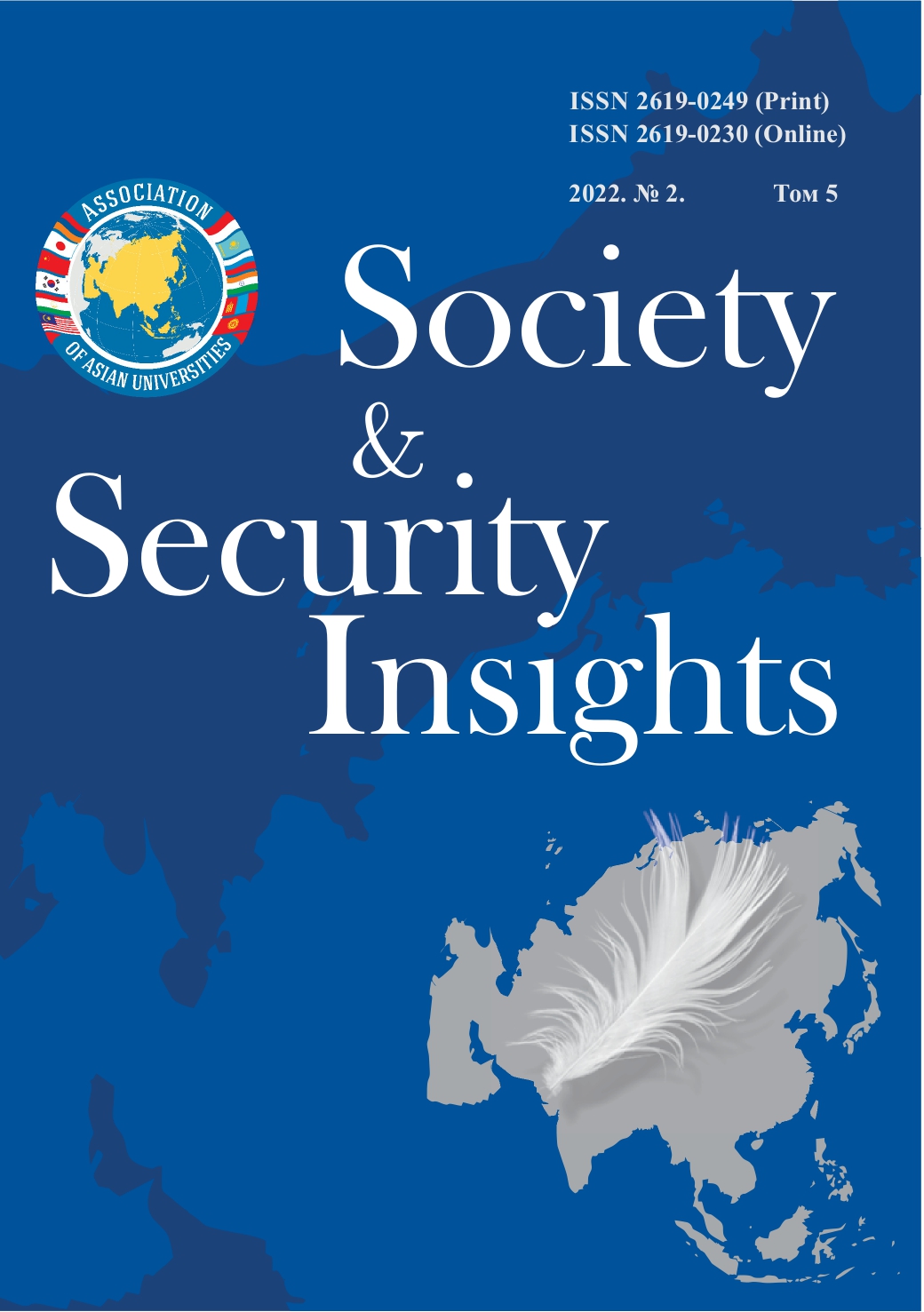CONSEQUENCES OF MIGRATION IN THE KYRGYZ REPUBLIC
Main Article Content
Abstract
The article is devoted to the problem of internal and external migration in the Kyrgyz Republic. After the collapse of the Soviet Union, the Kyrgyz Republic had experienced mass out-migration of the population. The people were forced to migrate during the period chaos to improve their quality of life. Basically, in the early 1990s, the Slavic people from Kyrgyzstan left for Russia and Kazakhstan. Strong internal migration began in 1994, when rural Kyrgyz arrived from regions to Bishkek, the capital of Kyrgyz Republic. Migration outside the former Soviet Union began in 2000. The vast majority of Kyrgyz went to Turkey, Germany or the USA. Thus, the problem of migration in the Kyrgyz Republic is not new. This article analyses the results of a 2019 focus group study. Field research was necessary to assess the effects of population migration and 14 focus groups were conducted in rural areas in the north of Kyrgyzstan. The results of the research revealed the positive and negative consequences of the migration process, reflecting the current migration situation in the north of Kyrgyzstan. In general, the growth of migration has led to new problems in society: families suffer, children are left without parental care and there is a drain (brain drain) of the working age population.
Downloads
Download data is not yet available.
Metrics
Metrics Loading ...
Article Details
How to Cite
Salmorbekova, R. B. (2022). CONSEQUENCES OF MIGRATION IN THE KYRGYZ REPUBLIC. Society and Security Insights, 5(2), 178-185. https://doi.org/10.14258/ssi(2022)2-12
Section
SHORT COMMUNICATIONS AND FIRST RESEARCH EXPERIENCE

This work is licensed under a Creative Commons Attribution 4.0 International License.
Authors retain the copyright of their manuscripts, and all Open Access articles are distributed under the terms of the Creative Commons Attribution License, which permits unrestricted use, distribution, and reproduction in any medium, provided that the original work is properly cited.
References
Абжамилова А. Ш. Тенденции динамики естественного движения населения Кыргызстана // Актуальные проблемы развития экономики Кыргызстана на современном этапе: Сб. ст. / КРСУ. Бишкек, 2005
Акаев А. А. Миграция: формы и роль в улучшении качества жизни населения // Международный журнал гуманитарных и естественных наук. 2017. № 2. С.195–202.
Заславская Т. И. Современное российское общество. Социальный механизм трансформации. М.: Дело, 2004. 397 с.
Мамырканов М. А. Правовое положение трудовых мигрантов из Кыргызстана в Российской Федерации // Бюллетень по правам человека в Кыргызской Республике. 2012. №1. С. 4–14.
Рыбаковский, Л. Л. Миграция населения. Москва : Издательство Юрайт, 2019. 480 с.
Салморбекова Р. Б. Влияние процесс глобализации на изменение кыргызского общества // Фундаментальные и прикладные исследования: проблемы и результаты. 2015. № 22. С. 11–-118.
Хорев Б. С. Проблемы изучения миграции населения. Москва : Мысль, 1978. 254 с.
References
Abzhamilova, A. Sh. (2005). Trends in the dynamics of the natural movement of the population of Kyrgyzstan. In: Actual problems of the development of the economy of Kyrgyzstan at the present stage. Bishkek: KRSU. (In Russ.).
Akaev, A. A. (2017). Migration: forms and role in improving the quality of life of the population. International Journal of Humanities and Natural Sciences, 2, 195–202. (In Russ.).
Zaslavskaya, T. I. (2004). Contemporary Russian society. Social mechanism of transformation. M .: Delo. (In Russ.).
Mamyrkanov, M. A. (2012). Legal status of labor migrants from Kyrgyzstan in the Russian Federation. Bulletin on Human Rights in the Kyrgyz Republic, 1, 4–14. (In Russ.).
Rybakovsky, L. L. (2019). Migration of population. Moscow: Yurayt Publishing House.
Salmorbekova, R. B. (2015). The impact of the process of globalization on the change in Kyrgyz society. Fundamental and applied research: problems and results, 22, 113–118. (In Russ.).
Khorev, B. S. (1978). Problems of studying population migration. (Stat.-geographic essays). Moscow: Mysl. (In Russ.).
Акаев А. А. Миграция: формы и роль в улучшении качества жизни населения // Международный журнал гуманитарных и естественных наук. 2017. № 2. С.195–202.
Заславская Т. И. Современное российское общество. Социальный механизм трансформации. М.: Дело, 2004. 397 с.
Мамырканов М. А. Правовое положение трудовых мигрантов из Кыргызстана в Российской Федерации // Бюллетень по правам человека в Кыргызской Республике. 2012. №1. С. 4–14.
Рыбаковский, Л. Л. Миграция населения. Москва : Издательство Юрайт, 2019. 480 с.
Салморбекова Р. Б. Влияние процесс глобализации на изменение кыргызского общества // Фундаментальные и прикладные исследования: проблемы и результаты. 2015. № 22. С. 11–-118.
Хорев Б. С. Проблемы изучения миграции населения. Москва : Мысль, 1978. 254 с.
References
Abzhamilova, A. Sh. (2005). Trends in the dynamics of the natural movement of the population of Kyrgyzstan. In: Actual problems of the development of the economy of Kyrgyzstan at the present stage. Bishkek: KRSU. (In Russ.).
Akaev, A. A. (2017). Migration: forms and role in improving the quality of life of the population. International Journal of Humanities and Natural Sciences, 2, 195–202. (In Russ.).
Zaslavskaya, T. I. (2004). Contemporary Russian society. Social mechanism of transformation. M .: Delo. (In Russ.).
Mamyrkanov, M. A. (2012). Legal status of labor migrants from Kyrgyzstan in the Russian Federation. Bulletin on Human Rights in the Kyrgyz Republic, 1, 4–14. (In Russ.).
Rybakovsky, L. L. (2019). Migration of population. Moscow: Yurayt Publishing House.
Salmorbekova, R. B. (2015). The impact of the process of globalization on the change in Kyrgyz society. Fundamental and applied research: problems and results, 22, 113–118. (In Russ.).
Khorev, B. S. (1978). Problems of studying population migration. (Stat.-geographic essays). Moscow: Mysl. (In Russ.).


 https://orcid.org/0000-0002-7580-9694
https://orcid.org/0000-0002-7580-9694